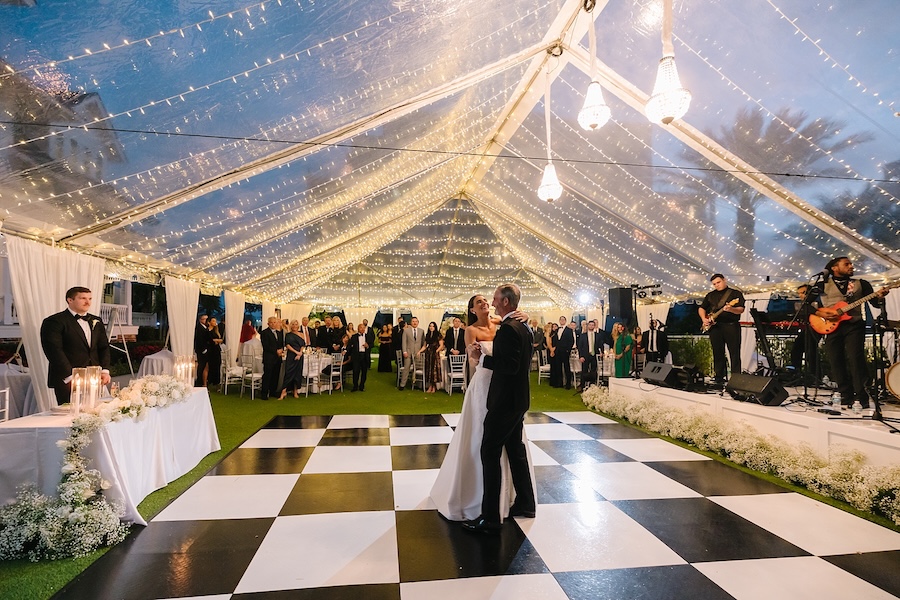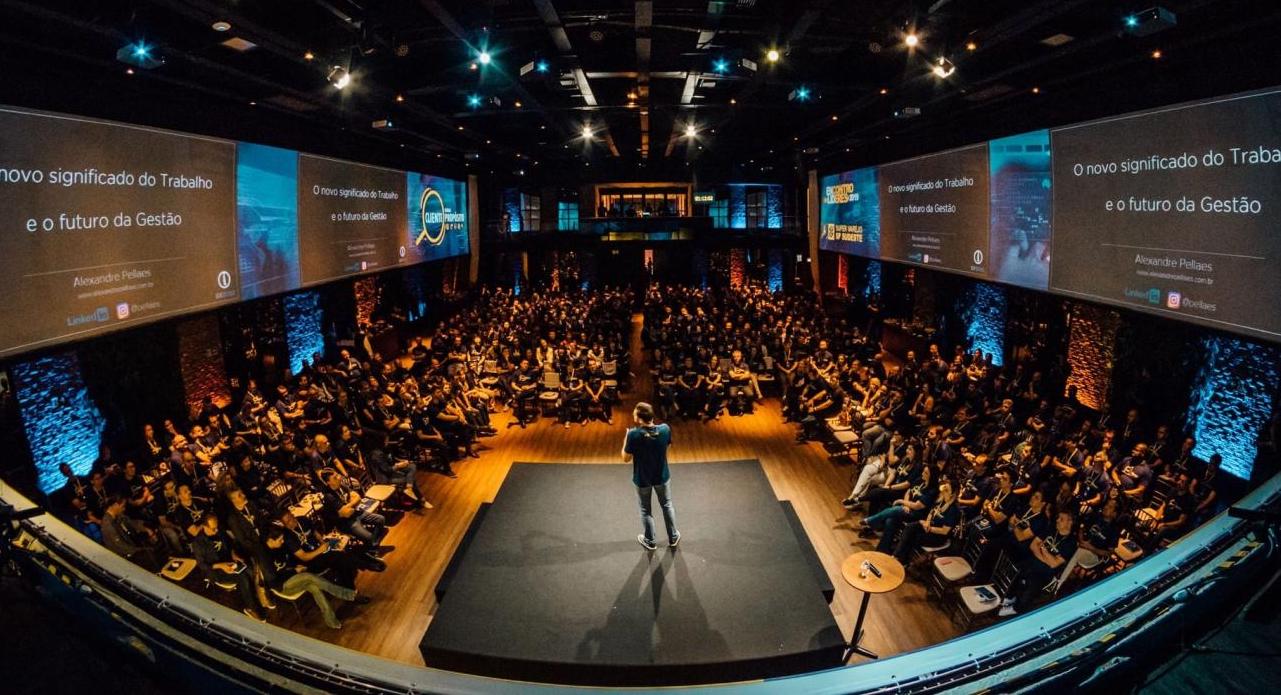Planning an event—whether it’s a corporate conference, a wedding, or a social gathering—requires attention to detail, a solid plan, and adaptability. Whether this is the first time you are planning an event or if you’ve planned a few in the past, this guide will walk you through every aspect of event planning to ensure you don’t leave any stone unturned. We will walk you through from defining your event’s purpose to following up afterward, ensuring that your event runs smoothly and leaves a lasting impression.

Step 1: Define Your Event’s Purpose and Goals
Identify the Core Purpose
Every successful event begins with a clear understanding of its purpose. Are you organizing a conference to educate industry professionals, a gala to raise funds for a cause, or a social event to foster community connections? Defining the purpose guides all subsequent decisions, from selecting speakers and vendors to crafting marketing messages.
Set Specific, Measurable Goals
Once you’ve identified the “why,” set specific, measurable goals that align with your mission. For a fundraiser, for example, setting a financial target and a donor engagement goal will help you focus efforts where they matter most. Here are some other examples:
- For Fundraisers: Set a target for the amount you want to raise.
- For Corporate Events: Define what you want attendees to learn or achieve.
- For Networking Events: Determine how many meaningful connections attendees should make.
Understand Your Target Audience
Understanding your audience is another crucial element. Conduct surveys or use demographic data to shape an event experience tailored to attendees’ preferences. A corporate conference may need high-value networking opportunities, while a community festival might prioritize interactive booths and family-friendly activities. Defining your goals and knowing your audience ensures your event is aligned with attendee expectations, setting the stage for success.
Example Goals Based on Event Type:
- Conference: 500 attendees, 10 guest speakers, 95% positive feedback on content.
- Fundraiser: Raise $100,000, acquire 50 new donors, 80% guest satisfaction.
- Workshop: Engage 100 participants, provide actionable skills, aim for 85% retention.
Establish a Cohesive Theme
A well-defined theme adds depth and cohesion to your event. Align the theme with your goals and brand identity. Carry it through every aspect, from branding and décor to catering and entertainment. Consistent thematic elements create a memorable and immersive experience for your attendees.
Step 2: Establish a Budget
Develop a Detailed Budget Outline
List all potential expenses, including venue rental, catering, audio/visual (AV) equipment, decor, transportation, and marketing materials like printed materials, name tags, and unexpected setup costs. This level of detail will keep your budget realistic and prepare you for hidden expenses.
Prioritize Expenses
Focus your budget on what will most impact your attendees. For a conference, high-quality AV equipment and speakers are essential; for a wedding, venue and catering might be more critical; for fun social gatherings, entertainment may be most important.
Include a Contingency Fund
Set aside 10–20% of the budget for unanticipated expenses, such as last-minute décor adjustments, tech issues, or additional staffing.
Craft a Thoughtful Event Budget
Creating a detailed budget is fundamental to successful event planning to keep costs on track. Budget categories may include:
- Venue: Rental fees, food & beverage minimums
- Catering: Food, beverages, rentals, staff
- A/V: Equipment, sound, lighting
- Rentals & Décor: Tables, chairs, signage, props
- Entertainment: Live band or DJ, guest speaker
- Event Management: Planner, security, staffing, event insurance
- Technology & Software: Projectors, virtual event platforms, Wi-Fi
- Photographers & Videographers: Capturing moments for future marketing promotions
- Misc.: Parking, coat check, etc.
Consider using budgeting software or apps like Eventbrite’s Budget Tracker or Excel templates. These tools help you monitor spending and avoid surprises.

Step 3: Choose a Date and Venue
Select a Date
Selecting the right date and venue requires consideration of multiple factors. Begin by avoiding scheduling conflicts, such as major holidays, competing industry events, or peak travel seasons. Then, think about your audience’s availability—weekday mornings might suit professionals, while weekends are typically better for social events. Take weather into account as well, especially for outdoor events.
For Multi-Day Conferences:
- Spread It Out: Avoid back-to-back sessions; allow breaks for networking and rest.
- Consider Time Zones: Accommodate diverse time zones for a global audience.
- Mix Formats: Vary session types for sustained engagement.
- Weekday vs. Weekend: Choose based on audience preferences and industry norms.
- Session Length: Opt for a balance between short and long sessions.
- Early Birds vs. Night Owls: Align with natural rhythms; consider evening events’ value.
- Flexibility: Plan for delays; stay open to participant feedback.
For Shorter Events:
- Weekday vs. Weekend: Tailor to the audience—weekdays for professionals, weekends for a relaxed vibe.
- Time Slots: Choose morning for energy, afternoon for a mix, and evening for sophistication.
- Consideration for Commute: Avoid rush hours and opt for centrally located venues.
- Session Variety: Keep it dynamic with a mix of activities and interactive elements.
- Weather Watch: Check forecasts for outdoor events; align with seasonal relevance.
- Flexibility in Timing: Include breaks; adapt based on real-time participant feedback.
Research and Book the Venue Early
Selecting an appropriate venue is essential to the success of your event. Consider factors like:
- Location: Convenient and accessible
- Capacity: Fits expected number of guests
- Layout: Appropriate space for activities
- Atmosphere: Aligns with desired tone
- Budget: Fits rental fees and Food & Beverage minimums
- Availability: Open on your preferred date(s)
- Restrictions: Noise, load-in/out, insurance requirements
- Accessibility: Wheelchair accessibility and handicap parking
- Amenities: Wi-Fi, audio-visual equipment, in-house catering
Ensure the venue aligns with the tone you wish to set and provides a conducive environment for your planned activities. For example, if you are having any guest speakers, ensuring there is an appropriate platform and layout that will accommodate your guests gathering to watch the speaker. Or, if you are having multiple workshops during the same time slot for a conference, then having a space that has multiple sectioned off classrooms or offices may be an important criterion for the venue to possess. Booking a venue well in advance is vital, as popular locations tend to get reserved quickly. Take the time to research, talk to, and visit potential venues in person to make an informed decision.
The Best Resource to Search for Venues
Unique Venues has thousands of party venues, event venues, and meeting venues that are easy to search, find, and connect with across the U.S. and Canada. You’ll be able to find the perfect venue to host your next conference, retreat, gala, wedding, birthday party, and more! The venue-finding services are free, and the service is dedicated to connecting unique people with unique spaces!
Negotiate Terms and Review Contracts
Clarify cancellation policies, payment schedules, and any potential additional fees. Ask about set-up times and room configurations, and negotiate these details when signing the contract.
Step 4: Select and Coordinate the Right Vendors
Once your venue is selected and you know what amenities the space offers, it’s time to choose the right vendors to assemble a dream team; each member contributes to the overall success of your event. Here are things to consider for a sample list of vendors you may need:

Catering: Savor the Flavorful Options
- Menu: Appetizers, entrees, sides, desserts
- Beverages: Open bar vs cash bar, drink options
- Service style: Buffet, stations, plated meals, passed apps
- Dietary needs modifications: Vegan, vegetarian, gluten-free, allergies
- Timing: When each course is served
- Rentals: Plates, glassware, linens, etc.
- Staffing: Servers, bartenders

A/V: Creating Sensory Experiences
- Audio/Visual: Speakers, mics, rigging, lighting, testing A/V equipment, consider backup equipment options

Rentals & Décor: Setting the Stage
- Rentals: Tables, chairs, and décor; discuss setup and teardown services with the vendor.

Entertainment: Captivating Your Audience
- Live Band or DJ: Consider the musical preferences of your attendees and choose an entertainment option that suits the event atmosphere.
- Guest Speaker: Select a speaker whose expertise aligns with your event theme. Research their past engagements and audience engagement levels.

Event Management: Orchestrating a Seamless Event
- Planner and Staff: Hire an experienced event planner who understands your vision. Discuss the staffing needs, including registration, catering, security, and technical support.
- Security and Event Insurance: Ensure you have adequate security personnel for crowd management and consider event insurance to mitigate potential risks.

Technology & Software: Enhancing Engagement
- Projectors and Screens: Opt for high-quality projectors and screens for presentations and visuals. Test the equipment to avoid technical glitches.

Photography & Videography: Capturing Memories
- Special Events: Choose professionals to capture special moments for a wedding or family gathering.
- Corporate Events: Capture content to use for future marketing. Discuss the usage rights for event photos and videos for future marketing promotions.

Transportation: Keep Your Event Running Smoothly
- Parking Service: Arrange convenient valet and parking options for attendees, considering the venue’s parking capacity and nearby facilities.
- Transportation: Consider if guests need transportation to move between event locations
By carefully considering these aspects and booking services well in advance, you ensure a seamless and unforgettable corporate event experience for both you and your attendees. Each vendor plays a vital role in bringing your vision to life, creating a memorable occasion that aligns perfectly with your company’s objectives.
The Best Resource to Search for Vendors
Here’s how to make informed decisions when selecting vendors for different categories. It is important to compare your options for each vendor category, this is where a vendor directory like Unique Venues Marketplace is useful. You can quickly and easily search through dozens of vendors based on your location and category for what you need to see a breakdown and uniform layout of information. This will save you time from digging through tons of websites trying to piece together scattered information.
Step 5: Plan the Program and Activities
Outline the Event Agenda
Start by drafting a schedule that reflects your event’s flow, incorporating opening remarks, main activities, interactive sessions, and breaks. For a full-day conference, balance educational sessions with networking breaks to avoid information overload. Similarly, for social events, provide structured activities while allowing for free-form mingling. Map out the day by scheduling main activities, breaks, and transitions. Consider the event’s flow, giving enough time for each segment to maintain engagement and hold attendees’ attention without overwhelming them.
Book Speakers or Performers
Consider bringing in speakers or performers who can add value to the experience. Entertainment options, such as live music, can enrich a gala or celebration. For conferences or formal gatherings, select industry leaders with insights that resonate with your theme. Reach out early, confirm their needs, and provide clear expectations on timing and content.
Plan Interactive Sessions
Use interactive elements like Q&As, breakout rooms, and networking breaks. Engagement keeps attendees focused, enhances networking, and makes the experience more memorable.
Example Agenda for a Full-Day Conference
- 8:00 AM: Registration and Networking
- 9:00 AM: Opening Keynote
- 10:00 AM: Workshop Sessions (Choice of 3)
- 12:00 PM: Lunch Break
- 1:00 PM: Panel Discussion
- 2:30 PM: Workshop Sessions (Choice of 3)
- 5:00 PM: Closing Remarks and Networking Reception
- 6:00 PM: Networking & Cocktail hour
Step 6: Send Out Invitations and Promote Your Event
For Private Events or Social Gatherings
Create visually appealing print or digital invitations with event date, time, location, attire, schedule, etc. Set an RSVP deadline at least 2 weeks pre-event, or 4 weeks for a wedding. If you feel it’s necessary, follow up with guests who haven’t responded. A spreadsheet can help you keep an organized record of RSVPs and finalize the headcount. Share the number of attendees with your vendors. Conduct tests beforehand to avoid last-minute hiccups with your audiovisual and technology equipment.
For Corporate & Professional Events
Consider what your event needs: Is it ticket sales, registrations, or brand awareness? Tailor your strategies based on these goals.
Promoting your corporate event is crucial to ensure a strong turnout and generate excitement among attendees. Consider various forms of communication and plan your promotional timeline:
- Social Media: Start promoting your event on social media platforms, such as Facebook, Twitter, LinkedIn, and Instagram, at least 6-8 weeks before the event. Share engaging content, teasers, and behind-the-scenes glimpses to pique interest.
- Email Marketing: Send out personalized invitations to your guest list 4-6 weeks prior to the event. Follow up with reminder emails, especially as the RSVP deadline approaches.
- Company Website: Create a dedicated event page on your company website with detailed information about the event, including date, time, venue, agenda, and registration instructions.
- Press Releases: Issue press releases to relevant industry publications, local newspapers, and online event calendars to reach a broader audience.
- Networking Events: Leverage networking events and industry meetups to spread the word about your upcoming event. Personally invite potential attendees and partners.
- Event Partnerships: Partner with other businesses or organizations in your industry to co-promote the event. Offer sponsor recognition in exchange for cross-promotion.
Plan when to release event information, ticket sale dates, and countdown reminders
A timeline might look like this:
- 3 months before: Announce event and begin early-bird tickets.
- 1 month before: Release sneak peeks of speakers or activities.
- 1 week before: Send reminders and share event tips.
- Leverage Sponsors and Partnerships
Step 7: Manage Registrations and Attendee Experience
Use an Online Registration System
Event Guru Software is our trusted industry partner to keep all your bookings, contracts, and communication in one place, reducing the chance of double bookings or scheduling conflicts.
Communicate with Registrants
Send confirmation emails upon registration and reminders before the event. Include essential details like parking instructions, check-in times, and event highlights.
Communicate with vendors to ensure everyone knows their arrival times, setup locations, and schedules. Confirm all technical needs with AV teams and prepare backup plans for essential items like microphones or projectors. Assign roles to staff or volunteers for various tasks, such as guest assistance, registration, and tech support.
Plan a Smooth Check-In Process
Registration Guru Software is our trusted partner for a streamlined registration process on the day of your event. Avoid long wait times by using this digital check-in tool so you can focus on giving a warm welcome to guests, as the first impression is crucial.
Step 8: Finalize Event Logistics
Confirm All Details with Vendors
Communicate with vendors to ensure everyone knows their arrival times, setup locations, and schedules. Confirm all technical needs with AV teams and prepare backup plans for essential items like microphones or projectors. Assign roles to staff or volunteers for various tasks, such as guest assistance, registration, and tech support.
Create an Event-Day Checklist
An event-day checklist can be invaluable, outlining the schedule, contact information for key players, and contingency plans. Having a central point of coordination on-site, like an event command center, allows for efficient communication and rapid problem-solving. This preparation will make it easier to handle any last-minute surprises.
Step 9: Execute and Oversee the Event
Arrive Early for Setup
On the day of the event, arrive early to oversee setup and ensure everything is in place. Perform a final run-through of the schedule with staff, confirming roles and responsibilities. Throughout the event, stay on top of the timeline and be prepared to make quick adjustments if sessions run over or issues arise. Monitoring the flow and addressing small issues proactively keeps the event on track and ensures a smooth experience for attendees.
Monitor Event Flow and Troubleshoot
Keep the schedule on track, and be prepared to make adjustments if sessions run over or issues arise. Stay in communication with staff for quick problem-solving.
Gather Real-Time Feedback
Gathering real-time feedback, such as through live polls or a suggestion box, can provide insights into what’s working well and areas for improvement. It’s also an excellent way to gauge attendee satisfaction as the event unfolds, allowing you to address concerns immediately.
Step 10: Follow Up and Gather Feedback
Send Thank-You Messages
After the event, following up with attendees, vendors, and stakeholders is essential for building lasting relationships. Send thank-you notes to show appreciation, and consider offering post-event content, like access to recorded sessions or a summary of key takeaways.
Distribute Post-Event Surveys
For corporate events, distributing a post-event survey within a day or two of the event helps capture fresh insights and allows attendees to share feedback on everything from content quality to logistics.
Evaluate Event Success Against Goals
Evaluating your event’s success against initial goals is critical for improvement. Review the feedback and identify areas for growth, considering how these insights can shape future events. Answer the following questions: What went well? What could we improve? Use this insight to improve future planning.
Final Thoughts
Event planning is a complex but rewarding process. With careful preparation, strategic decisions, and attention to detail, you can create a memorable experience that meets your objectives and delights attendees. This guide offers a comprehensive roadmap to event planning, equipping you to tackle each stage with confidence. By following these steps, whether you’re new to planning or experienced, you can achieve seamless events that resonate with your audience and leave a lasting impact.
